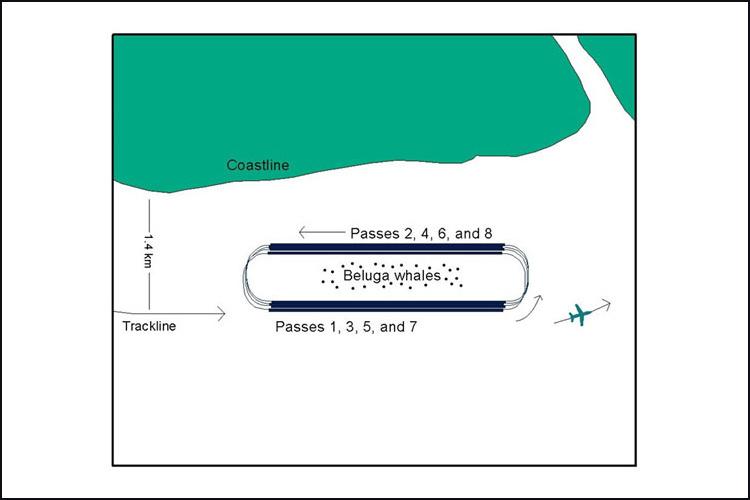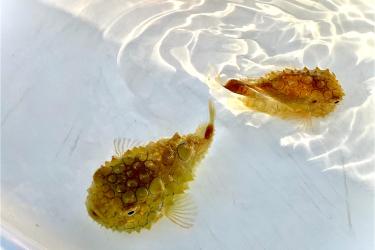Today was the third day of our search for belugas in upper Cook Inlet (north of East Foreland and West Foreland). After conducting these surveys for over 20 years, we know a number of places where belugas are likely to congregate.
At this time of year, the belugas usually gather near river mouths to feed on fish. Similar to past surveys, so far we have found belugas in Turnagain Arm, Chickaloon Bay, and at the mouths of the Beluga River, Theodore River, Susitna River, and the Little Susitna River.
Once we encounter a group, we begin a series of counting and video passes following a racetrack pattern around the belugas (see image above).
Meet the Bloggers
Kim Shelden is a Marine Biologist in the Cetacean Assessment and Ecology Program at the Alaska Fisheries Science Center's Marine Mammal Laboratory. Kim has been a part of the Cook Inlet beluga aerial survey project since it began in 1993.
Starting as a videographer, observer, and data recorder, she took over as Chief Scientist in August 2007. Kim has logged over 740 hours flying surveys over Cook Inlet.
Julie Mocklin is a NOAA Fisheries affiliate through the Joint Institute for the Study of the Atmosphere and Ocean at the University of Washington. Julie began her career as a whale watch naturalist and quickly moved on to conducting right whale and harbor porpoise aerial surveys in the Gulf of Maine.
Julie began working for the Marine Mammal Lab as a volunteer in 2002 and became part of the bowhead group in 2005. In the interim, she flew harbor porpoise surveys in Southeast Alaska and was the boat driver for a study on energetics and behavior of southern resident killer whales for the Northwest Fisheries Science Center, NOAA Fisheries.
Julie's career has focused on aerial surveys and obtaining photographs of cetaceans for abundance estimates and life history data. She got her Masters of Science at the University of Washington, using aerial photos to learn about bowhead whale feeding behavior.
Julie has worked as observer and videographer for the Cook Inlet beluga aerial surveys intermittently since 2007.
Linda Vate Brattstrom is a NOAA Fisheries affiliate through the Joint Institute for the Study of the Atmosphere and Ocean at the University of Washington.
Linda started at Alaska Fisheries Science Center in 2007 doing beluga video analysis. Since then she's been working on both beluga and bowhead whale projects.
One of her favorite aspects of her job is to take part in the Cook Inlet beluga surveys.
Christy Sims is a NOAA Fisheries affiliate through the Joint Institute for the Study of the Atmosphere and Ocean at the University of Washington (UW).
Christy started as a photo-identification volunteer at the Alaska Fisheries Science Center in 1998, and has been working with the Cook Inlet beluga whale project since completing her Masters of Marine Affairs at the UW in 2001. She has worked as observer and videographer on the Cook Inlet beluga aerial surveys since 2003.
When she isn't analyzing video or designing and managing databases, Christy enjoys bringing her co-workers her experimental bake-off recipes, hanging out with family and friends, playing outdoors, reading and travelling.







